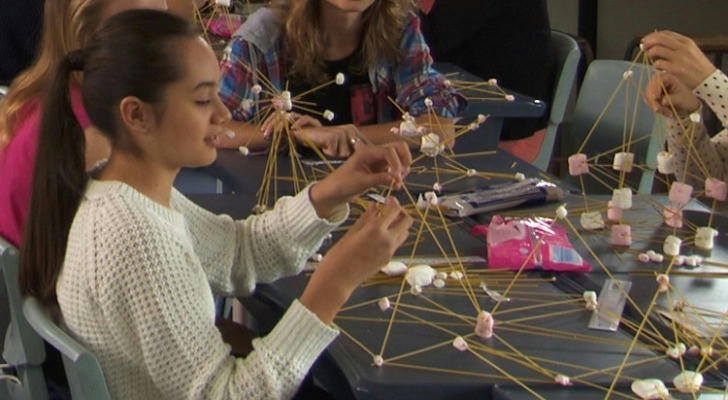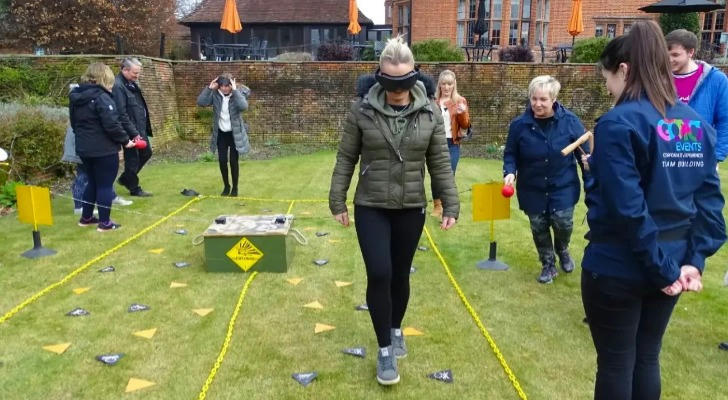Top 5 Fun Team Building Games
Team building activities are essential to foster collaboration, enhance communication, and build trust among team members. Engaging, interactive games not only promote teamwork but also provide an enjoyable experience for participants. Here, we explore five fun and effective team building games, along with detailed case studies and specific solutions to improve team dynamics.
1. Marshmallow Challenge

Goal: Build the tallest freestanding structure using spaghetti, tape, string, and marshmallows.
Materials Needed:
20 uncooked spaghetti noodles
1 yard of tape
1 yard of string
1 marshmallow
Instructions:
Split participants into small teams of 4-5 people.Each team has 18 minutes to build the tallest structure possible and place the marshmallow on top. Teams must strategize and communicate effectively to design their structure within the time limit.
Learning Outcomes: This game encourages creativity, teamwork, and problem solving. Teams learn to brainstorm, delegate tasks, and adjust strategies based on trial and error. The competitive nature of the challenge adds excitement and urgency, pushing teams to think quickly and work collaboratively.
2. Blindfold Maze

Objective: Navigate a maze blindfolded, guided only by verbal instructions from a partner.
Materials Required:
Blindfold
Ground markers or cones to create a maze
Instructions: Set up a simple maze using cones or markers in designated areas.Divide participants into teams of two. One person is blindfolded and the other acts as a guide.The blindfolded participant must listen carefully and follow verbal instructions to navigate the maze.
Learning Outcomes: This game improves communication skills, trust, and patience. Participants learn the importance of clear instructions and how to effectively convey information to others. This exercise also helps build empathy because the guide must consider the blindfolded participant's perspective.
3. Two Truths and a Lie

Objective: Get to know team members better by sharing personal facts.
Materials Required: None
Instructions: Each participant takes a turn sharing three statements about themselves—two truths and a lie—and the rest of the team must guess which statement is a lie.
Learning Outcomes: This icebreaker game fosters personal connection and encourages team members to share information about themselves in a fun and engaging way. It helps build rapport and camaraderie, making it easier for team members to work together in the workplace.
4. Scavenger Hunt

Goal: Complete a list of tasks or find items within a set time limit.
Materials Needed:
List of items or tasks
Pens or markers for each team
Instructions: Create a list of items or tasks that the team must find or complete in a designated area, divide participants into groups, and distribute the lists.Set a time limit (e.g., 30 minutes) for the team to complete as many items as possible.
Learning Outcomes: This game promotes teamwork, problem solving, and friendly competition. Teams learn to collaborate, delegate tasks, and communicate effectively to achieve goals. A sense of urgency and competition increases excitement and encourages participants to think creatively.
5. Escape Room Challenge

Goal: Solve puzzles and riddles to escape a locked room within a set time.
Required Materials: Escape Room Venue or DIY Escape Room Setup
Instructions: Choose an escape room venue or create your own using puzzles and clues, divide participants into groups, and set a time limit for them to escape (usually 60 minutes). Teams must work together to solve puzzles and find clues to open the door.
Learning Outcomes: This activity promotes collaboration, critical thinking, and communication. Participants learn to leverage each other's strengths and work together under pressure to achieve a common goal. The thrill of escaping adds an element of fun and excitement, making it a memorable experience.
A notable example of the effectiveness of team-building games came from the experience of a marketing team at a mid-sized tech company. The team had been struggling with communication and collaboration issues, which led to missed deadlines and low morale. To address these challenges, management organized a series of team-building activities, including a blindfold maze and a marshmallow challenge.
Implementation of Team Building Activities:
Blindfold Maze: Teams are divided into teams of two, with one member blindfolded. As they navigate the maze, they must rely solely on verbal instructions from their partner. This exercise highlights the importance of clear communication and trust.
**Marshmallow Challenge: **
After the maze, the teams participated in the Marshmallow Challenge. They were tasked with building the tallest structure using limited materials in a short time. This challenge required them to brainstorm, delegate tasks, and work collaboratively under pressure.
After participating in these team-building activities, the marketing team reported a significant improvement in their collaboration and communication skills. They began to apply the skills developed in the game to their projects, resulting in a more efficient workflow and a more positive work environment. Team members felt more connected and engaged, which ultimately led to better project results and increased job satisfaction.
To ensure that the benefits of team-building activities would last long-term, the company implemented a structured follow-up program:
Monthly Team-Building Events:
The company committed to organizing monthly team-building events that rotated between fun games and more serious workshops focused on skill development. This helped to maintain the momentum generated by the initial events and emphasized the importance of teamwork.
Recognition and Rewards:
To further encourage collaboration, the company established a recognition program that rewards teams for excellent teamwork and successful project completion. This not only motivated team members but also highlighted the value of collaboration.
Participating in fun team-building games can have a profound impact on team dynamics. By participating in activities such as the marshmallow challenge, blindfold maze, two truths and a lie, scavenger hunt, and escape room challenges, team members can improve their communication, trust, and collaboration skills. A case study of a marketing team illustrates how structured team-building activities can improve performance and morale.
By implementing a specific follow-up plan that includes regular check-ins, monthly events, recognition programs, and feedback mechanisms, organizations can ensure that the benefits of team-building games continue over the long term. Investing in such activities is worthwhile for any organization looking to improve team performance and create a positive work environment.
